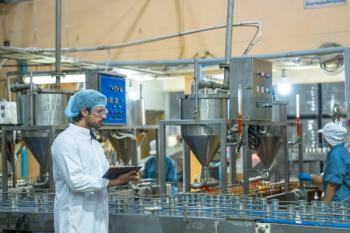
Craig Prater to Receive Coblentz Society’s 2023 Williams-Wright Award
Craig Prater was named the 2023 recipient of the Williams-Wright Award, which is given out annually by the Coblentz Society. He was recognized at Pittcon 2023, which took place in Philadelphia, Pennsylvania.
The Coblentz Society gives out the Williams-Wright Award at Pittcon every year to an industrial spectroscopist who has made significant contributions to vibrational spectroscopy. In 2023, Craig Prater of Photothermal Spectroscopy Corporation was honored for his career developing and commercializing novel scientific measurement techniques.
After completing a PhD in physics at the University of California Santa Barbara, Prater spent 15 years in various roles in R&D and leadership, culminating as chief technologist at Veeco Metrology (now Bruker), a market leader in the field of atomic force microscopy (AFM). He was heavily involved in creating many AFM technologies and instruments that are now in widespread use in academic and industrial research and have been used in hundreds of thousands of scientific publications. This led to his being recognized as the first Technology Fellow at Veeco Instruments, the highest technical rank in an organization of about 2000 employees.
Prater joined Anasys Instruments in 2007, where he helped pioneer the commercialization of AFM-based infrared spectroscopy (AFM-IR), a tool that for the first time provided broadly applicable chemical analysis and topographic imaging with nanoscale spatial resolution. AFM-IR combines nanoscale imaging with the chemical analysis capabilities of infrared spectroscopy. Anasys was acquired by Bruker in April 2018.
Following the sale of Anasys, Prater, together with the previous Anasys Instruments leadership team of Kevin Kjoller and Roshan Shetty, formed a new company called Photothermal Spectroscopy Corp (PSC) to develop and commercialize optical photothermal infrared (O-PTIR) spectroscopy. The O-PTIR approach achieves significant performance benefits over conventional IR spectroscopy including >10x better spatial resolution, operation in both transmission and reflection modes without scattering artifacts, and operation in a non-contact mode.
While working in the industry for such a long time, Prater also co-authored 140 scientific and trade publications and patents with over 9200 citations in the fields of scanning probe microscopy, nanoscale infrared spectroscopy, nanoscale materials characterization, and photothermal microscopy.
Ellen Nagy of Bakelite hosted the award symposium, with speakers including Prater, Andrea Centrone of NIST, Ferenc Borondics of Soleil Synchrotron, Rohit Reddy of the University of Houston, and Roy Goodacre of the University of Liverpool. Seminar topics focused on different types of spectroscopies, showing how versatile the field can be and what discoveries had already been made.
The seminar took place Monday, March 20, and Pittcon 2023 took place from March 18–22.
Newsletter
Get essential updates on the latest spectroscopy technologies, regulatory standards, and best practices—subscribe today to Spectroscopy.





